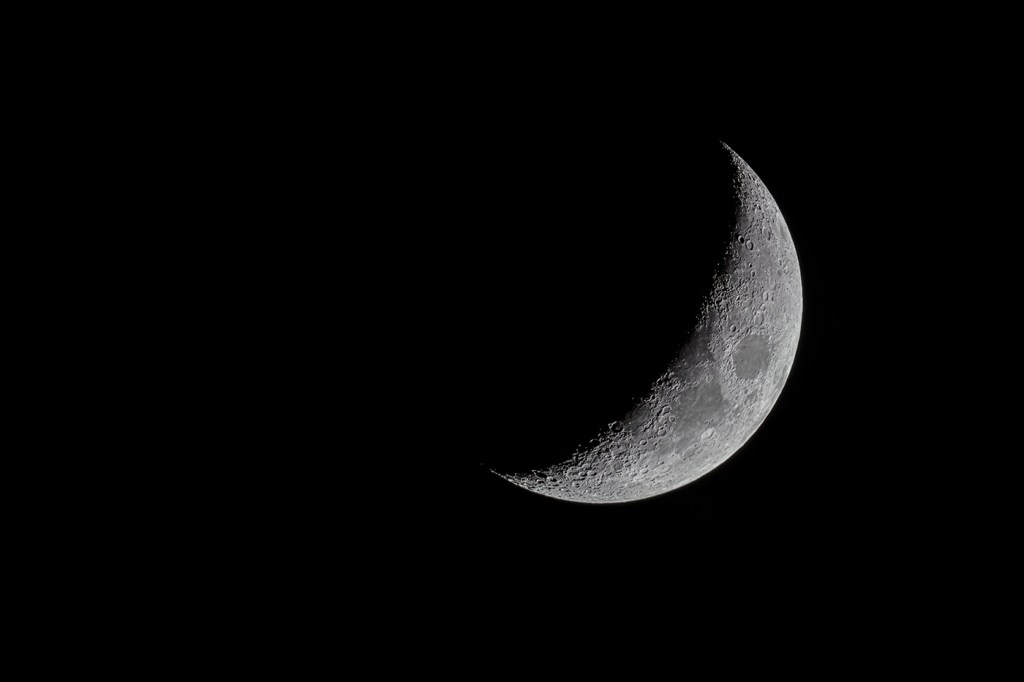Yes, the moon is shrinking. Here’s what that means for the planned Artemis III mission —
and future lunar visits
Moonquakes are not likely to impact one-time lunar visits, but seismic activity — a product of moon shrinkage — would become a problem as human beings build structures and establish bases on the moon, experts say.

As NASA gears up to send human beings back to the moon during the still-to-be-scheduled Artemis III mission, researchers with the federal agency are learning more about the geologic profile of Earth’s lone satellite — including that it, apparently, has been shrinking.
A study published recently found that a proposed landing site for NASA’s long-anticipated manned trip is flush with steep surface ripples caused by “moonquakes” — the lunar equivalent of earthquakes, which occur through a combination of interior cooling and the Earth’s gravitational pull.
The study highlights how tidal forces between the Earth and moon, cooling and the resulting contractions lead to breaks in the moon’s crust and the formation of “scarps,” or “cliff-like landforms,” much like what happens on Earth.
Northeastern University physics professor and cosmologist Jacqueline McCleary says that over time these processes result in a gradual shrinking — or shriveling, as some describe — of the moon (it’s contracted roughly 150 feet in diameter over the last few hundred million years).
“That residual heat is just being radiated away, and as the moon cools down — as the moon’s interior cools down — it shrinks,” McCleary says. “Because the lunar rock is quite brittle, it cracks and breaks, and it creates this particular kind of geological feature — these scarps.”

Seismic activity on the moon is not a new phenomenon. Scientists have noted the presence of moonquakes since the 1970s using seismometers astronauts placed on the moon’s surface then. The landing site of interest to NASA is the moon’s south pole — a “permanently shadowed” region thought to potentially contain ice.
Using analytical modeling techniques, researchers were able to identify an area thought to be the epicenter of one of the strongest moonquakes recorded by the seismometers near the south polar region — not far from the proposed landing site for Artemis III. The Artemis moon exploration program is NASA’s successor to the Apollo program, which resulted in the first successful human trip to the moon.
“What’s new here is the very high-resolution imaging of these scarps near the lunar pole obtained with the Lunar Reconnaissance Orbiter,” McCleary says. “We have a pretty good idea of the composition of the moon’s crust because the Apollo missions brought back samples. So we’ve had a good idea that at least some of these shallow moonquakes are due to the shrinking of the moon’s surface.”
Featured Posts
Now that there is ample evidence of seismic activity and surface shrinkage on the moon, how does it impact future lunar visits? Does it mean anything for life on Earth?
The answers: nothing really changes for those of us on Earth, but there are certainly new considerations for manned missions to the moon.
Jonathan Blazek, a physics professor at Northeastern, says for one-time visits, it’s not likely that moonquakes will pose a threat. But in the long run, as human beings build structures and establish bases on the moon, seismic activity would become an obvious problem.
“To the extent that there is a concern, it’s if you are on the surface of the moon and you’re trying to build something,” Blazek says. “You’re trying to move around on a geologically active surface, a place with frequent earthquakes — that’s going to be a problem.”
Blazek notes another potential issue — one of gravitational differences.
“The other issue is that for a given strength of earthquake, it’s just tougher to be on the moon than Earth because gravity is weaker there,” he says.
Whereas on Earth, where the force of gravity keeps human beings well anchored to the ground, any shaking or trembling on the moon would be strong enough to send human beings flying in the air, Blazek says.
While the NASA study clearly lays out the hazards associated with moonquakes, a separate study found that the seismic activity “would not affect many regions … including the majority Artemis candidate landing regions.”
The Artemis III manned lunar mission was postponed until 2026 to allow NASA scientists to work on “challenges associated with first-time developments, operations and integration.” The space program has spurred lots of chatter about the future of manned trips to the moon and beyond. One of the aims of the Artemis program is to facilitate human missions to Mars.
“I think a situation in which people are living on the moon is further in the future,” Blazek says. “But in terms of, say, a semi-permanent science outpost, even if it’s just machinery — that is in the realm of something that we might see in the next decade.”
Whenever humans end up on the moon, one thing is for sure: they’ll be well-equipped to handle a few lunar trembles.
“What [NASA] is saying is that if it happened before, it will happen again,” McCleary says. “And so the nature of the lunar surface around that area is such that, if there is another moonquake, it could trigger landslides — or moonlike-landslides, I guess — of rock that could potentially cause damage.”











